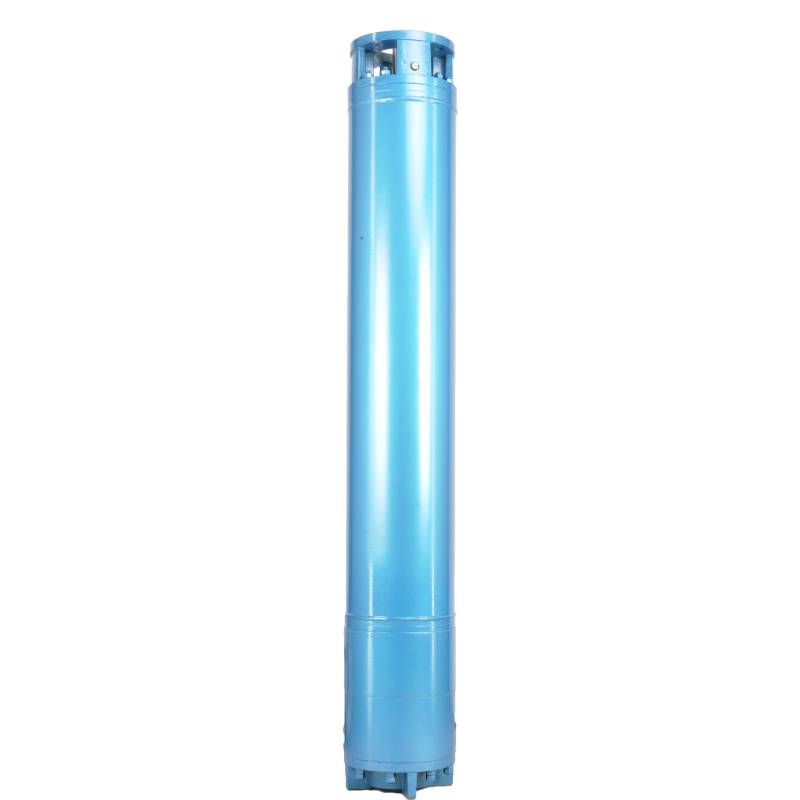Jul . 27, 2024 11:18 Back to list
Exploring the Benefits and Applications of Submersible Mixer Pump Technology in Modern Industries
Submersible Mixer Pump A Comprehensive Overview
Submersible mixer pumps are innovative devices that play a crucial role in various industrial and municipal applications. These pumps are designed to operate while submerged in liquids, making them particularly effective for tasks that require both mixing and pumping capabilities. This article explores the key features, benefits, applications, and operational considerations of submersible mixer pumps.
What is a Submersible Mixer Pump?
A submersible mixer pump combines the functions of a mixer and a pump in one integrated unit. It is specifically engineered to be submerged into liquid environments, such as wastewater treatment facilities, industrial processing plants, and agricultural systems. The pump component is responsible for moving fluids, while the mixer component agitating and homogenizing the liquid to prevent sediment build-up or separation.
Key Features
Submersible mixer pumps are equipped with several distinguishing features
1. Compact Design As a submerged device, these pumps can be installed in tight spaces without the need for extensive piping systems.
2. Sealing Technology They come with robust sealing mechanisms to prevent leaks, ensuring that the motor remains insulated from the liquid being pumped.
3. Variable Speed Control Many models offer adjustable speed settings, allowing operators to customize the mixing intensity based on the specific application.
4. Durable Construction Typically made from corrosion-resistant materials such as stainless steel or high-grade plastics, these pumps are built to withstand harsh environments and aggressive fluids.
Benefits of Submersible Mixer Pumps
1. Enhanced Mixing Efficiency By continuously agitating the liquid, submersible mixer pumps prevent sedimentation and ensure a uniform mixture, which is essential in applications such as wastewater treatment.
2. Space-Saving Solution Their compact design makes them ideal for installations with limited space, eliminating the need for complex surface pumping and mixing systems.
submersible mixer pump

3. Reduced Maintenance With fewer moving parts exposed to the environment, these pumps often require less maintenance and have extended service lives compared to traditional pumps.
4. Versatility They can be used in various applications, including sewage treatment, sludge mixing, agricultural irrigation, and even in certain industrial processes.
Applications
Submersible mixer pumps are used in a myriad of settings, including
- Wastewater Treatment Essential for mixing wastewater and sludge, ensuring efficient breakdown of organic materials and even distribution of chemicals.
- Agricultural Practices Used in irrigation systems to mix fertilizers and nutrients into water, effectively distributing them across fields.
- Industrial Processes Play a critical role in mixing chemicals, slurries, and other industrial fluids where consistent distribution is vital.
- Stormwater Management Employed in retention basins and other stormwater management systems to prevent the buildup of sediments.
Operational Considerations
While submersible mixer pumps offer numerous advantages, there are some operational considerations to keep in mind
1. Proper Installation Ensuring that the pump is correctly installed is crucial for optimal performance and longevity.
2. Regular Monitoring Routine checks can help detect issues such as wear and tear on components, preventing unexpected breakdowns.
3. Understanding Compatibility It is essential to select a pump that is compatible with the specific liquid and environmental conditions of the application to prevent damage and ensure efficient operation.
In conclusion, submersible mixer pumps are vital tools in the management and processing of various liquids across numerous industries. Their ability to simultaneously mix and pump makes them invaluable in maintaining the quality and efficiency of liquid systems, ultimately contributing to more effective operations in facilities and processes around the world.
-
Submersible Water Pump: The Efficient 'Power Pioneer' of the Underwater World
NewsJul.01,2025
-
Submersible Pond Pump: The Hidden Guardian of Water Landscape Ecology
NewsJul.01,2025
-
Stainless Well Pump: A Reliable and Durable Pumping Main Force
NewsJul.01,2025
-
Stainless Steel Submersible Pump: An Efficient and Versatile Tool for Underwater Operations
NewsJul.01,2025
-
Deep Well Submersible Pump: An Efficient 'Sucker' of Groundwater Sources
NewsJul.01,2025
-
Deep Water Well Pump: An Efficient 'Sucker' of Groundwater Sources
NewsJul.01,2025
-
 Submersible Water Pump: The Efficient 'Power Pioneer' of the Underwater WorldIn the field of hydraulic equipment, the Submersible Water Pump has become the core equipment for underwater operations and water resource transportation due to its unique design and excellent performance.Detail
Submersible Water Pump: The Efficient 'Power Pioneer' of the Underwater WorldIn the field of hydraulic equipment, the Submersible Water Pump has become the core equipment for underwater operations and water resource transportation due to its unique design and excellent performance.Detail -
 Submersible Pond Pump: The Hidden Guardian of Water Landscape EcologyIn courtyard landscapes, ecological ponds, and even small-scale water conservancy projects, there is a silent yet indispensable equipment - the Submersible Pond Pump.Detail
Submersible Pond Pump: The Hidden Guardian of Water Landscape EcologyIn courtyard landscapes, ecological ponds, and even small-scale water conservancy projects, there is a silent yet indispensable equipment - the Submersible Pond Pump.Detail -
 Stainless Well Pump: A Reliable and Durable Pumping Main ForceIn the field of water resource transportation, Stainless Well Pump has become the core equipment for various pumping scenarios with its excellent performance and reliable quality.Detail
Stainless Well Pump: A Reliable and Durable Pumping Main ForceIn the field of water resource transportation, Stainless Well Pump has become the core equipment for various pumping scenarios with its excellent performance and reliable quality.Detail
